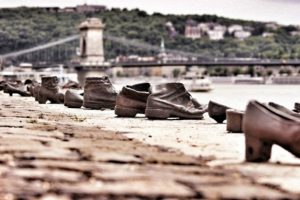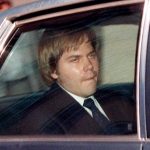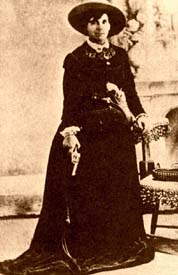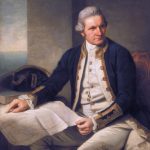shot
 While looking at some historic photos, I came across one that was both intriguing, and sad. The title of the photograph was as intriguing as the photograph itself. Shoes on the Danube Banksdepicts a memorial in Budapest, Hungary that was conceived by film director Can Togay. The memorial sits on the east and of the Danube River. Togay worked with sculptor Gyula Pauer to create a memorial to honor the Jews who were killed by fascist Arrow Cross militiamen in Budapest during World War II.
While looking at some historic photos, I came across one that was both intriguing, and sad. The title of the photograph was as intriguing as the photograph itself. Shoes on the Danube Banksdepicts a memorial in Budapest, Hungary that was conceived by film director Can Togay. The memorial sits on the east and of the Danube River. Togay worked with sculptor Gyula Pauer to create a memorial to honor the Jews who were killed by fascist Arrow Cross militiamen in Budapest during World War II.
As I looked at the picture of many pairs of shoes, the magnitude of what had happened there, and exactly what I was looking at hit me. These shoes were not just shoes, they were people…innocent people, who lined up and shot for no other reason than that they were Jewish. These people were told to remove their shoes, and then they were shot. Their lifeless bodies fell into the river and were swept downstream. There was no funeral, no burial…despite the traditions that are set up for Jewish burial. Of course, I know that not every Jewish death can be handles in the Jewish traditions, but these people were murdered in such a way as to humiliate them, including the lack of a traditional burial.
The monument along the Danube River represents the lives of the people who were murdered, there is no way to really represent the people, because no one knows who they were, what they looked like, or even how many there were for sure, but rather the monument depicts their shoes left behind on the bank. It is the only real connection we can have to these victims of such horrible hatred. The brutal treatment of the approximately 3,500 people, 800 of them Jews, and the rest accused of Jewish activities, is beyond horrid. These people were forced to strip naked on the banks of the Danube and face the river. Then, a firing squad shot the prisoners at close range in the back so that they fell into the river to be washed away.
The monument is located on the Pest side of the Danube Promenade in line with where Zoltan Street would meet the Danube if it continued that far, about 980 feet south of the Hungarian Parliament and near the Hungarian Academy of Sciences…between Roosevelt Square and Kossuth square. The sculptor created sixty pairs of period-appropriate shoes out of iron. The shoes are attached to the stone embankment, and behind them lies a 131 foot long, 27 inch high stone bench. At three points are cast iron signs, with the following text in Hungarian, English, and Hebrew: “To the memory of the victims shot into the Danube by Arrow Cross militiamen in 1944–45. Erected 16 April 2005.”
Most of the murders along the edge of the River Danube took place around December 1944 and January 1945, when the members of the Arrow Cross Party police (“Nyilas”) took as many as 20,000 Jews from the newly established Budapest ghetto and executed them along the river bank. There were, of course, some survivors who managed to make it out, and lived to tell their stories. On of those Was Tommy Dick, who wrote the book, “Getting Out Alive.” I have not read the book yet, but after seeing this memorial, I will be reading it very soon.
There were heroes in Budapest too. Valdemar Langlet, head of the Swedish Red Cross in Budapest, with his wife Nina, and later the diplomat Raoul Wallenberg and 250 coworkers were working around the clock to save the Jewish population from being sent to Nazi concentration camps. This group later grew in number to approximately 400. Lars and Edith Ernster, Jacob Steiner, and many others were housed at the Swedish Embassy in Budapest and 32 other buildings throughout the city which Wallenberg had rented and declared as extraterritorially Swedish to try to safeguard the residents. Italian Giorgio Perlasca did the same, sheltering Jews in the Spanish Embassy.
On the night of January 8, 1945, an Arrow Cross execution brigade forced all the inhabitants of the building on  Vadasz Street to the banks of the Danube. At midnight, Karoly Szabo and 20 policemen with drawn bayonets broke into the Arrow Cross house and rescued everyone. Among those saved were Lars Ernster, who fled to Sweden and became a member of the board of the Nobel Foundation from 1977 to 1988, and Jacob Steiner, who fled to Israel and became a professor at the Hebrew University of Jerusalem. Steiner’s father had been shot dead by Arrow Cross militiamen 25 December 1944, and fell into the Danube. His father had been an officer in World War I and spent four years as a prisoner of war in Russia. These were horrific murders, and after looking at the pictures of this memorial and reading about the horrible murders, my mind cannot unsee the images it has conjured up of this atrocity.
Vadasz Street to the banks of the Danube. At midnight, Karoly Szabo and 20 policemen with drawn bayonets broke into the Arrow Cross house and rescued everyone. Among those saved were Lars Ernster, who fled to Sweden and became a member of the board of the Nobel Foundation from 1977 to 1988, and Jacob Steiner, who fled to Israel and became a professor at the Hebrew University of Jerusalem. Steiner’s father had been shot dead by Arrow Cross militiamen 25 December 1944, and fell into the Danube. His father had been an officer in World War I and spent four years as a prisoner of war in Russia. These were horrific murders, and after looking at the pictures of this memorial and reading about the horrible murders, my mind cannot unsee the images it has conjured up of this atrocity.
 Over the course of our nation’s history, we have managed to keep most of our presidents safe. Out of 45 Presidents of the United States, 4 were assassinated, and 6 others were shot while in office, but survived their attacks. Ronald Regan was the last United States President to be shot while in office. Reagan did not immediately realize that he had been shot…something that came as a shock to many. He was rushed to the hospital, where he underwent emergency surgery to remove the bullet and to repair his lung. The president remained in good humor, and he reportedly told his wife Nancy, “Honey, I forgot to duck” (a line first attributed to the boxing heavyweight Jack Dempsey when he lost the title to Gene Tunney in 1926), and to his doctors he said, “Please tell me you’re Republicans.” He was a loyal Conservative all his life.
Over the course of our nation’s history, we have managed to keep most of our presidents safe. Out of 45 Presidents of the United States, 4 were assassinated, and 6 others were shot while in office, but survived their attacks. Ronald Regan was the last United States President to be shot while in office. Reagan did not immediately realize that he had been shot…something that came as a shock to many. He was rushed to the hospital, where he underwent emergency surgery to remove the bullet and to repair his lung. The president remained in good humor, and he reportedly told his wife Nancy, “Honey, I forgot to duck” (a line first attributed to the boxing heavyweight Jack Dempsey when he lost the title to Gene Tunney in 1926), and to his doctors he said, “Please tell me you’re Republicans.” He was a loyal Conservative all his life.
John Hinckley, Jr. was a deranged individual with a crazed obsession for Jody Foster. Hinckley’s path toward the assassination attempt began in 1976 when he saw the movie Taxi Driver. In the movie, Robert DeNiro’s character, Travis Bickle stalks a Presidential candidate in the hopes that he will somehow impress and rescue a young prostitute played by Jodie Foster. Hinckley, who spent seven years in college without earning a degree or making a friend, added Foster to his list of obsessions, which also included Nazis, the Beatles, and assassins. In May 1980, Hinckley wrote to Foster while she attended Yale University, traveled there and talked to her on the phone at least once. Soon after, he began following President Jimmy Carter. In October, he was arrested at airport near a Carter campaign stop for carrying guns. However, the Secret Service was not notified. Hinckley  simply went to a pawnshop in Dallas and bought more guns. For the next several months, Hinckley’s plans changed daily. He pondered kidnapping Foster, considered killing Senator Edward Kennedy and began stalking newly elected President Reagan. Finally, he wrote a letter to Foster explaining that his attempt on Reagan’s life was for her. He kept abreast of the president’s schedule by reading the newspaper.
simply went to a pawnshop in Dallas and bought more guns. For the next several months, Hinckley’s plans changed daily. He pondered kidnapping Foster, considered killing Senator Edward Kennedy and began stalking newly elected President Reagan. Finally, he wrote a letter to Foster explaining that his attempt on Reagan’s life was for her. He kept abreast of the president’s schedule by reading the newspaper.
On March 30, 1981, Hinckley decided that he had found the perfect opportunity, and it turns out that he was right. Normally the President wears a bullet proof vest when entering and exiting engagements, but as it was only 30 feet to the limo, it was deemed unnecessary. Bad idea. Reagan stepped outside the Hilton Hotel in Washington D.C. where he had just addressed the Building and Construction Workers Union of the AFL-CIO. Hinckley was armed with a .22 revolver with exploding bullets and was only ten feet away from Reagan when he began shooting. Fortunately, he was a poor shot and most of the bullets did not explode as they were supposed to. Hinckley’s first shot hit press secretary James Brady in the head, critically wounding him, and other shots wounded a police officer and a Secret Service agent. The final shot hit Reagan’s limo and then ricocheted into the President’s chest. Hinckley had completely missed  Reagan, but “got lucky” when the bullet ricocheted. How he managed that is beyond the imagination, and not so “lucky” for President Reagan who, as he said, “Forgot to duck.” I also find it amazing that President Reagan could keep his sense of humor. It shows me what a man of grit he really was.
Reagan, but “got lucky” when the bullet ricocheted. How he managed that is beyond the imagination, and not so “lucky” for President Reagan who, as he said, “Forgot to duck.” I also find it amazing that President Reagan could keep his sense of humor. It shows me what a man of grit he really was.
Hinckley was also wounded police officer Thomas Delahanty and Secret Service agent Timothy McCarthy. All of the shooting victims survived, although Brady’s 2014 death was later ruled a homicide 33 years after he was shot. Hinckley was later not found not guilty by reason of insanity. Hinckley was released from institutional psychiatric care on September 10, 2016, which I find astonishing. He currently lives with his mother.
 Myra Belle Shirley was born in a log cabin near Carthage, Missouri on February 5, 1848 to “Judge” John Shirley, and his third wife, Elizabeth “Eliza” Pennington. John Shirley was the black sheep of a well-to-do Virginia family who had moved west to Indiana, where he married and divorced twice. His third wife, Eliza, was on the Hatfield side of the feuding Hatfield and McCoy families, which ranks up there with people I wouldn’t want for parents. The Hatfield and McCoy feuds, while not starting until about 1865, went on for decades, and they were messy and confusing over those years. You might no know who Myra Belle Shirley was, or you might know her best at Belle Starr.
Myra Belle Shirley was born in a log cabin near Carthage, Missouri on February 5, 1848 to “Judge” John Shirley, and his third wife, Elizabeth “Eliza” Pennington. John Shirley was the black sheep of a well-to-do Virginia family who had moved west to Indiana, where he married and divorced twice. His third wife, Eliza, was on the Hatfield side of the feuding Hatfield and McCoy families, which ranks up there with people I wouldn’t want for parents. The Hatfield and McCoy feuds, while not starting until about 1865, went on for decades, and they were messy and confusing over those years. You might no know who Myra Belle Shirley was, or you might know her best at Belle Starr.
Myra grew up in a well to do family, after her father John Shirley made good in 1856 when he and his wife sold their financially successful farming venture raising wheat, corn, hogs, and horses in Jasper County, Missouri. When John sold the land, they opened an inn, a tavern, livery stable and blacksmith shop. Their businesses took up almost an entire city block. John Shirley had become a respected member of the burgeoning county seat of Carthage, and his daughter Myra Belle lived the life of a spoiled, rich girl, attending the Carthage Female Academy, where in addition to the basics, she was taught music and classical languages. She was a bright student, with polite manners, and a talent for playing the piano. However, she also liked to flaunt her status a “rich girl” and liked having an audience. She also loved the outdoors, where she spent many a day roaming the countryside with her older brother Bud, who taught her how to ride a horse and handle a gun…a little out of the ordinary, but still within the confines of a proper upbringing, but dramatic changes were coming for Myra.
When the Kansas-Missouri Border War broke out. Jasper County watched both armies pass through time and again, forcing residents to take sides, and making neighbors into bitter enemies. Irregular bands of “Jayhawkers” and “Red Legs” laid waste to Missouri communities in support of the Union. When son Bud joined Quantrill’s Raiders, John Shirley was a proud father. Bud, who knew the area and the people well, served admirably as a scout, quickly attaining a captain’s rank. But in June 1864 Bud was killed in Sarcoxie, Missouri. The raids had taken their toll on Shirley’s businesses and after Bud’s death, the “Judge” gave up, sold his Missouri property and moved his family to a farm near Scyene, Texas, a small settlement southeast of Dallas.
In 1866 the James-Younger Gang robbed their first bank in Liberty, Missouri, and fled with $6,000 in cash and bonds. Splitting up, Jesse and Frank James, along with the Youngers, fled to Texas, where they met up with Myra Shirley. Soon, Myra became smitten by Cole, quickly becoming a member of their “gang.” One of these outlaw bands, seeking refuge, stayed at the Shirley house one night. Belle later stated that it was there that she became reacquainted with the first man she ever loved. His name was Jim Reed, and she had first met him back in Missouri, where the Reed and Shirley families had been friends. The romance blossomed in Texas, and Belle and Jim married on November 1, 1866. The Shirleys had no objection to the marriage, as Jim Reed was not yet a wanted man. Jim moved into the Shirley household near Scyene and shared the farm chores. Later, he became a salesman for a Dallas saddle and bridle maker. By late 1867, though, he and Belle were living on the Reed homestead in Missouri. Early in September 1868, Belle gave birth to her first child, Rosie Lee. Belle adored the baby and referred to her as her “Pearl.” The nickname stuck. When Jim and Belle moved to Missouri, Reed was a wanted man, allegedly for murdering a man named Shannon. The two fled to California with their young daughter Pearl and before long a second child came along who they named Edward.
In 1869 Belle, Reed and two other outlaws rode to the North Canadian river country, where they tortured an old Creek Indian until he told them where he had hidden $30,000 in gold. With their share of the loot, Jim and Belle returned to Texas, where she played the role of “Bandit Queen” to the hilt. But, it wasn’t long before the outlaw life caught up with Reed and on August 1874, Reed was killed in a gunfight by a member of his own gang. Belle left her children with her mother while she rode the outlaw trail. In Indian Territory (what is now Oklahoma,) Starr got involved with a flat-faced Indian outlaw who went by the name of “Blue Duck.” Of her life, Belle Starr stated to The Fort Smith Elevator about one year prior to her death, “I regard myself as a woman who has seen much of life.” On February 3, 1889, two days before her 41st birthday, she was killed. She was riding home from a neighbor’s house in Eufaula, Oklahoma, when she was ambushed. After she fell off her horse, she was shot again to make sure she was dead. Her death resulted from shotgun wounds to the  back and neck and in the shoulder and face. Legend says she was shot with her own double barrel shotgun. According to Frank “Pistol Pete” Eaton, her death was due to different circumstances. She had been attending a dance. Frank Eaton had been the last person to dance with Belle Starr when Edgar Watson, clearly intoxicated had asked to dance with her. When Belle Starr declined, he later followed her. When on the way home, she stopped to give her horse a drink at a creek, he shot and killed her. According to Frank Eaton, Watson was tried, convicted and executed by hanging for the murder.
back and neck and in the shoulder and face. Legend says she was shot with her own double barrel shotgun. According to Frank “Pistol Pete” Eaton, her death was due to different circumstances. She had been attending a dance. Frank Eaton had been the last person to dance with Belle Starr when Edgar Watson, clearly intoxicated had asked to dance with her. When Belle Starr declined, he later followed her. When on the way home, she stopped to give her horse a drink at a creek, he shot and killed her. According to Frank Eaton, Watson was tried, convicted and executed by hanging for the murder.
Belle’s children didn’t do much better, and turned out as one would expect, with the influence their mother had on them. Belle’s son, Eddie Reed, was convicted of horse theft and receiving stolen property in July 1889. Judge Parker sent him to prison in Columbus, Ohio. Belle’s daughter, Rosie Reed, also known as Pearl Starr, became a prostitute to raise funds for Eddie’s release. She did eventually obtain a presidential pardon in 1893. Ironically, Eddie became a deputy in Fort Smith and killed two outlaw brothers named Crittenden in 1895, and was himself killed in a saloon in Claremore, Oklahoma on December 14, 1896. Pearl operated several brothels in Van Buren and Fort Smith, Arkansas, from the 1890s to World War I.
 While visiting Alaska a few years ago, Bob and I kept hearing about Captain James Cook. I suppose I had probably heard a little about him at one point or another during my school years, but as often happens with kids, I wasn’t really interested…at least not until I saw Alaska for myself. Then, the places that were discussed in history actually came to life, because I was there in person. In reality, Captain Cook had a direct impact on several areas of the west coast of the United States, including the Puget Sound in Washington and areas of Oregon. Cook’s two ships, the Discovery and Resolution, had worked their way northwest from what is now Oregon and Puget Sound, along the British Columbia and Alaska coast, hoping to find the long sought after Northwest Passage to Europe.
While visiting Alaska a few years ago, Bob and I kept hearing about Captain James Cook. I suppose I had probably heard a little about him at one point or another during my school years, but as often happens with kids, I wasn’t really interested…at least not until I saw Alaska for myself. Then, the places that were discussed in history actually came to life, because I was there in person. In reality, Captain Cook had a direct impact on several areas of the west coast of the United States, including the Puget Sound in Washington and areas of Oregon. Cook’s two ships, the Discovery and Resolution, had worked their way northwest from what is now Oregon and Puget Sound, along the British Columbia and Alaska coast, hoping to find the long sought after Northwest Passage to Europe.
In early June 1778, Captain Cook and his men were in the Cook Inlet, hoping it would lead to the imagined passageway to Europe. It didn’t, of course, but once again Cook sent his crew exploring in small boats. Their adventures there led to the naming of Turnagain Arm, which Captain Cook originally called River Turnagain. It was so named because it was a disappointing “turn again” for Cook’s crew. The problem they were having was because Turnagain is subject to climate extremes and large tide ranges. During high tide, taking a boat in is simple, but if you don’t get out before low tide, you will find yourself fighting the quicksand-like mudflats that make up the beaches along Turnagain Arm in low tide.
In the times that Captain Cook was exploring for England, it was customary to name places after places and people in England. The visit to Cook Inlet was part of Cook’s longer exploration of the Alaska coast from which included a stop in Prince William Sound, which Cook named, along with Bligh Reef in the Sound. Bligh Reef would become famous in 1989 when the tanker Exxon Valdez ran aground on it and spilled millions of gallons of crude oil. Prince William Sound, interestingly, was almost named “Sandwich Sound” by Cook after the Earl of  Sandwich in England, and who also, by the way, invented the sandwich as a food item. The Sound was renamed by Cook after Prince William, a descendent of the royal family when his journal was published. Leaving Prince William Sound, Cook ventured west along the Alaska coast to explore further, and after leaving Cook Inlet, he named Bristol Bay after Admiral Earl of Bristol, and Norton Sound after Sir Fletcher Norton, then Speaker of the British House of Commons. As he continued his quest for the Northwest Passage, Cook entered the Chukchi Sea through the Bering Strait and, amazingly, got as far as Icy Cape, on Alaska’s northwest coast, before being stopped by ice. In fact, the two ships were almost trapped by ice the off of Icy Cape.
Sandwich in England, and who also, by the way, invented the sandwich as a food item. The Sound was renamed by Cook after Prince William, a descendent of the royal family when his journal was published. Leaving Prince William Sound, Cook ventured west along the Alaska coast to explore further, and after leaving Cook Inlet, he named Bristol Bay after Admiral Earl of Bristol, and Norton Sound after Sir Fletcher Norton, then Speaker of the British House of Commons. As he continued his quest for the Northwest Passage, Cook entered the Chukchi Sea through the Bering Strait and, amazingly, got as far as Icy Cape, on Alaska’s northwest coast, before being stopped by ice. In fact, the two ships were almost trapped by ice the off of Icy Cape.
During his travels, Captain Cook named many other places, including Mount Edgecumbe and Cape Edgecumbe after George, Earl of Edgecumbe. He broke from protocol in naming Mount Fairweather and Cape Fairweather, using the fact that he had good weather at the time of his exploration, as inspiration for the names. Cross Sound was so named because he found it on May 3, designated on his calendar as Holy Cross day. Cape Suckling was named after Maurice Suckling, comptroller of the Royal Navy when Cook left England. Controller Bay was probably also named after Maurice Suckling, but the Russians translated the name to Zal Kontrolyer on the Hydrogaphy Department Chart 1378, dated 1847, and so it remained Controller Bay. Cape Hinchinbrook was named after Viscount Hinchinbroke. Snug Corner Cove was so named because Captain Cook thought, “And a very snug cove it is.” Montague Island was named after John Montagu, Earl of Sandwiche, the son of Viscount Hinchinbroke. The list of names and their origins goes on and on, but I find these the most interesting.
During his third visit to the Sandwiche Islands, which we now know as Hawaii, Captain James Cook lost his life  in a mob fight with the Hawaiian natives, who wanted one of his boats. As the men came ashore, the Hawaiians greeted Cook and his men by hurling rocks at them. They then stole a small cutter vessel from the Discovery. Negotiations with King Kalaniopuu for the return of the cutter collapsed after a lesser Hawaiian chief was shot to death, and a mob of Hawaiians descended on Cook’s party. The captain and his men fired on the angry Hawaiians, but they were outnumbered. Only a few managed to escape to the safety of the Resolution. Captain Cook was killed by the mob on February 14, 1779. A few days later, the Englishmen retaliated by firing their cannons and muskets at the shore, killing some 30 Hawaiians. The Resolution and Discovery eventually returned to England.
in a mob fight with the Hawaiian natives, who wanted one of his boats. As the men came ashore, the Hawaiians greeted Cook and his men by hurling rocks at them. They then stole a small cutter vessel from the Discovery. Negotiations with King Kalaniopuu for the return of the cutter collapsed after a lesser Hawaiian chief was shot to death, and a mob of Hawaiians descended on Cook’s party. The captain and his men fired on the angry Hawaiians, but they were outnumbered. Only a few managed to escape to the safety of the Resolution. Captain Cook was killed by the mob on February 14, 1779. A few days later, the Englishmen retaliated by firing their cannons and muskets at the shore, killing some 30 Hawaiians. The Resolution and Discovery eventually returned to England.

